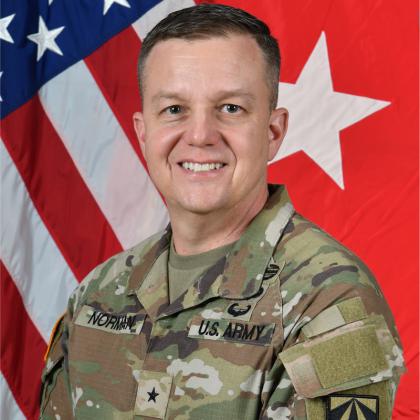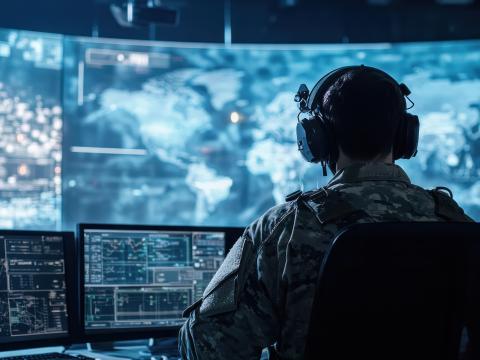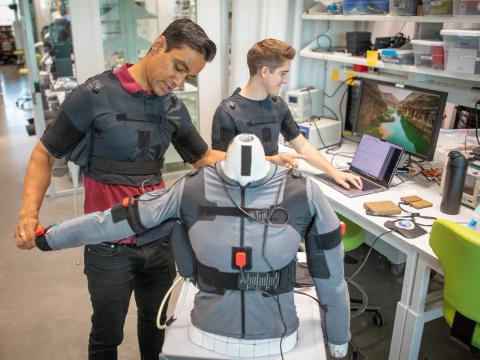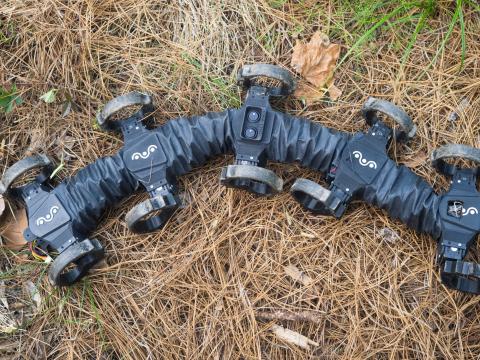Army of Robots: Machines Will Rule Defense
The first casualty of the next war will most likely not be mourned or missed.
“This year, the Army started fielding our first robots outside the [explosive ordnance disposal] community,” said Christine Wormuth, secretary of the Army, in a speech at an event.
Also at the Association of the United States Army (AUSA) annual conference, the Army offered more details on how machines are expected to replace humans in a panel discussion.
“Shame on us if we're not focused on figuring out how to use robotics and human machine interface prior to first contact,” said Maj. Gen. Curtis Buzzard, commanding general of the U.S. Army Maneuver Center of Excellence.
Gen. Buzzard explained his lines of effort:
- Use machines at first contact, keeping soldiers safer
- Employ platforms that can carry different payloads for a variety of missions
- Use data to inform decisions
- Develop formations, including manned and unmanned machines
- Incorporate new capabilities to legacy equipment that will stay with the Army for years to come
The lessons acquired through ongoing research suggest that the next steps will integrate platforms, steering away from crewed platforms and adding capabilities through robots.
“What we're trying to achieve is to allow our formations to fight bigger than themselves without having to add a lot of manned combat power to those formations,” said Brig. Gen. Geoffrey Norman, director, Next Generation Combat Vehicles Cross Functional Team at U.S. Army Futures Command.
Gen. Norman’s research suggests the missions machines are best suited for are surveillance and defense, whereas attack maneuvers could challenge robots beyond their current abilities.
Speakers at the panel Human Machine Integrated Formations addressed the necessary trust between soldiers and their equipment, thus slowing the pace of innovation to ensure that new capabilities are not a drag to units.
“The challenge, the thing that really stands in the way of soldier adoption, is the reliability and the ruggedness of the robotic systems,” Gen. Norman told the audience.
A critical component of these capabilities is in operation. Digital native soldiers may have advantages over older operators, still, the pressures of combat demand ease of use.

Gen. Norman defined these goals as “a warrior-machine interface that's intuitive, that allows soldiers to employ the robots in a way that doesn't add a cognitive burden, that gives them trust that they can fight better with the robots than without.”
Another key mission for unmanned platforms is logistics, part of what Gen. Buzzard described as the Army’s second line of effort.
“We have to look at formations and robots, or that capability, to do things at point of need, to take some of that stress and strain off our already large distribution networks, especially when you look at the sheer distance of a place like [the Indo-Pacific],” said Col. Shane Upton, director of the Army's Contested Logistics Cross Functional Team.
Col. Upton described capabilities that would support ship-to-ship and ship-to-shore payloads being developed in conjunction with the U.S. Marine Corps.
Michael Cadieux from the U.S. Army Combat Capabilities Development Command participated in the panel and the discussion was facilitated by Brig. Gen. Stephanie Ahern, director of concepts at the Futures and Concepts Center, U.S. Army Futures Command.

The challenge, the thing that really stands in the way of soldier adoption, is the reliability and the ruggedness of the robotic systems.





Comments